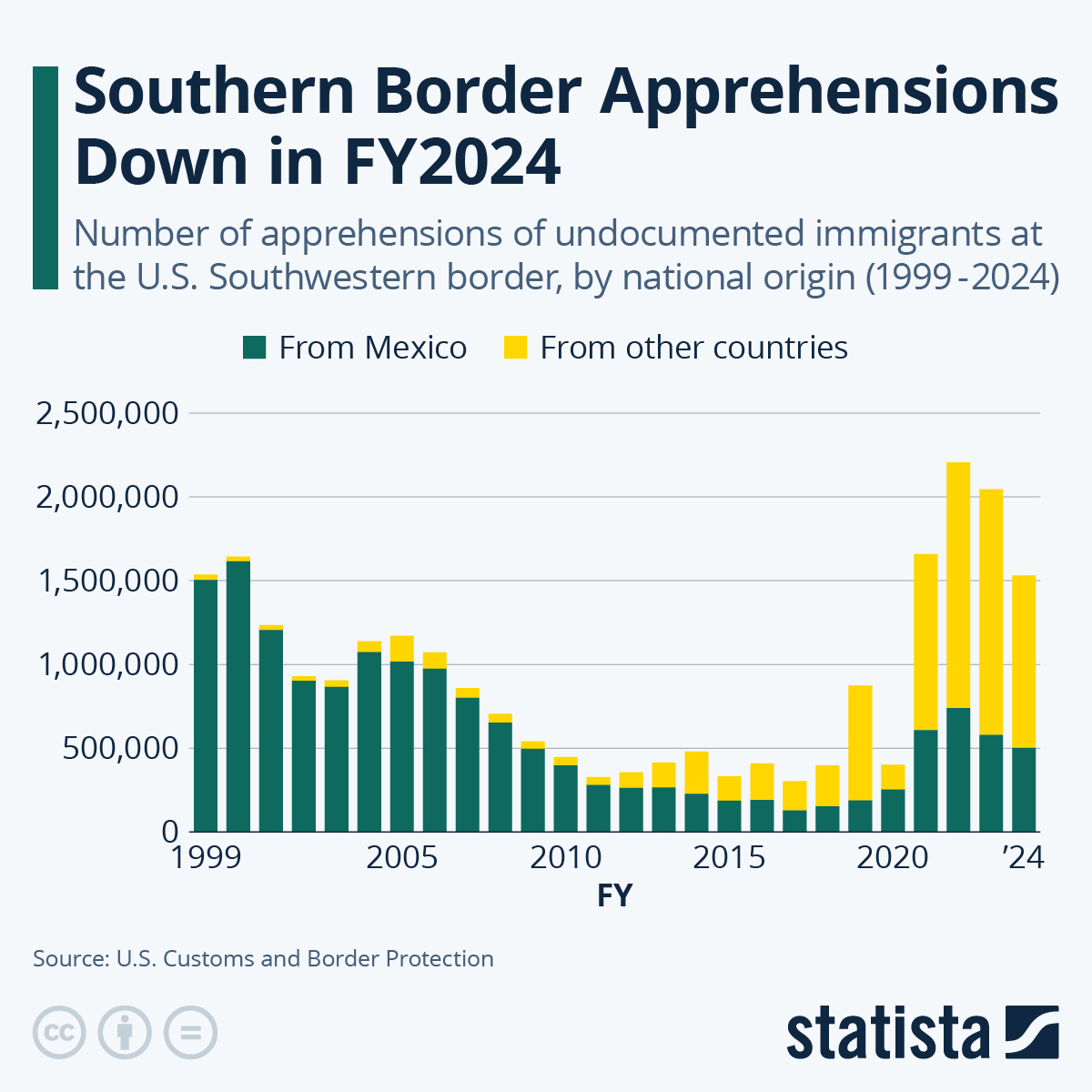President Joe Biden on Sunday visited the Southern U.S. border at El Paso, Texas, after tensions over migration to the United States have been simmering for months. These, for example, included the busing of migrants north from the Southern U.S. - at times approved by Republican governors. Ahead of the visit, the Biden Administration had unveiled a new policy, denying migrants from Cuba, Nicaragua, Venezuela and Haiti the right to claim asylum at the Mexican border, instead opening up entry quotas for these nations. The move has been widely condemned by advocates and human rights organizations for restricting the universal right to claim asylum.
As seen in numbers by U.S. Customs and Border Protection, the fiscal year of 2019 saw a first spike in undocumented migrants apprehended at the Southern U.S. border, caused by arrivals from Central America. The fact that these migrants often travel in family units while fleeing from violence then gave rise to the infamous Trump-era policy of jailing undocumented immigrants while separating them from any children they might have been traveling with. Another Trump administration policy, dubbed Remain in Mexico, is in use until today - two years after Biden took office - after judges blocked its termination, negotiations with Mexico stretched and finally the dismantling of the program became another case for the courts.
The pandemic year of 2020 put a temporary stop to migration movements, while 2021 and 2022 border apprehensions hit all-time highs of 1.66 million and 2.21 million, respectively. The inflow of undocumented immigrants from Central America and beyond again drove numbers up significantly in the last two fiscal years, but immigration from Mexico also increased for the fifth year in a row - together creating two more exceptional years at the Southern border.
Historically, immigrants from Mexico made up the largest share of undocumented arrivals to the United States. The arrivals were mostly classified as work migrants, i.e. men arriving without their families at least initially. In the year 2000, Customs and Border Protection data shows that more than 1.64 million people - mostly Mexicans - were arrested at the border - the former all-time high. Immigration from Mexico started to decrease during the Great Recession as work was in short supply. It remained low in the following decade for reasons including the economy in Mexico doing better while the country shifted towards an aging population, which caused workers to be more sought after. While this development already flipped again in 2018, the coronavirus pandemic seems to have accelerated the shift as more single adults attempt to leave Mexico for the United States once more.
The number of non-Mexicans apprehended at the border almost reached 1.5 million in 2022. Out of these, around a third came from El Salvador, Guatemala and Honduras, down from 80 percent in 2021, showing the more diverse groups of migrants that have been arriving at the Southern border in the last fiscal year.





















